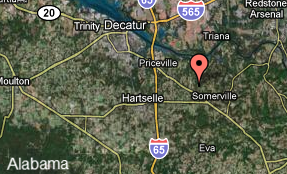Pegasus Comparison
We are often asked to compare ScanLook with the Leica Pegasus systems. While I am sure the Pegasus system is a very nice system and is a big improvement for Leica (who didn't have a MMS prior to the Pegasus), it does not compete with the ScanLook system. Let's take a brief look at why.
Regarding positioning accuracy (i.e. geo-referencing), Leica uses the NovAtel FSAS INS. ScanLook can use the same INS. So in this sense we can immediately eliminate any advantage Leica has in this regards. In fact, since Leica is locked into the FSAS if the consumer wanted a better INS Leica could not provide it - and we can. We can use the NovAtel ISA-100C, the IXBlue ATLANS-C (a very good solution at a better price), or the new SBG Apogee-D (the smallest package, most durable system of similar specifications). The FSAS is the largest of the three INS just mentioned - but it is a good system just the same. The point is, we can use the FSAS, and routinely do, so their is absolutely no advantage gained by the Pegasus system in regards to either absolute or relative accuracy.
Regarding control point registration, ScanLook has a very, very good control point registration module included with the software. Our registration and corrections are a pre-point cloud solution. We address the control points prior to generating a massive point cloud and then correcting it. I do not know what Leica offers in this regards but I know they have something.
Regarding the laser scanners. Pegasus is locked to only two laser scanners: the Z+F Profiler and the Leica P20. The Profiler is a very good system but it is fairly large and consumes a lot of power. It is a high quality scanner from Z+F giving superb results. It has a range of 120 meters. I do not consider the range a problem though. The Profiler is a true 360 degree scanner built for mobile applications only. So it cannot do static scanning but it can get a full 360 degree FOV meaning it does not miss overhead objects. The Profiler also has a mirror spin rate of up to 200Hz. This is very important for scanning at high speeds.
The Leica P20 is a static scanner modified for mobile applications which is a very nice feature. This gives a nice dual purpose functionality. However, it does mean it has a blind spot where it would mount on a tripod (270 degree FOV). This means it has a 90 degree blind spot missing a lot of overhead obstacles. Also, it does not spin at 200Hz but rather at 50 or possibly 100 Hz. I have not verified this but it is probably only 50 Hz in mobile mode, nevertheless let's say 100 Hz. It is also quite heavy at 11.9kg. It's range is 120 meters.
Meanwhile, ScanLook can use one or two FARO X330's. They are not even half the weight (4.5kg) of the P20 and not even half the price. They spin at a 100Hz with a 305 degree FOV (not 270). So they have a blind spot but it is 35 degrees smaller than the P20. They have a range of over 330 meters. Additionally, we can also use the Z+F scanners. So the only thing the Pegasus can offer on the lasers that we cannot is the P20 - but we can see that it is clearly not a good choice compared to the FARO X330. In addition, we can build a dual or triple scanner system. In fact, we typically recommend the Velodyne HD32 and a single FARO (or even dual FARO). A system with this configuration (1 Velodyne HD32, 2 x330's) sells for easily $200,000 less than the Pegasus 2.
The Pegasus camera specs state eight 2000x2000 pixel images at 8fps. They are not panoramic cameras.
ScanLook can use the GoLook 360 camera which uses 7 GoPro-like HD video cameras capturing 1920x1080p30fps imagery from each camera with 10.5 hours of built-in storage space or it can use either Point Grey Ladybug (5 or 3) camera. The LD5 has six 5MP at 10fps cameras. It is a panoramic camera. Both of these systems deliver panoramic imagery.
The Pegasus weighs 51kg.
The ScanLook system is compartmentalized such that no component is very heavy. This makes it completely possible for even a slightly built person to lift the system into place on any vehicle.
Regarding price, a single FARO x330 system with a NovAtel FSAS and Ladybug5 camera system, all being superior to the Pegasus 2, sells for half the price of the Pegasus.




